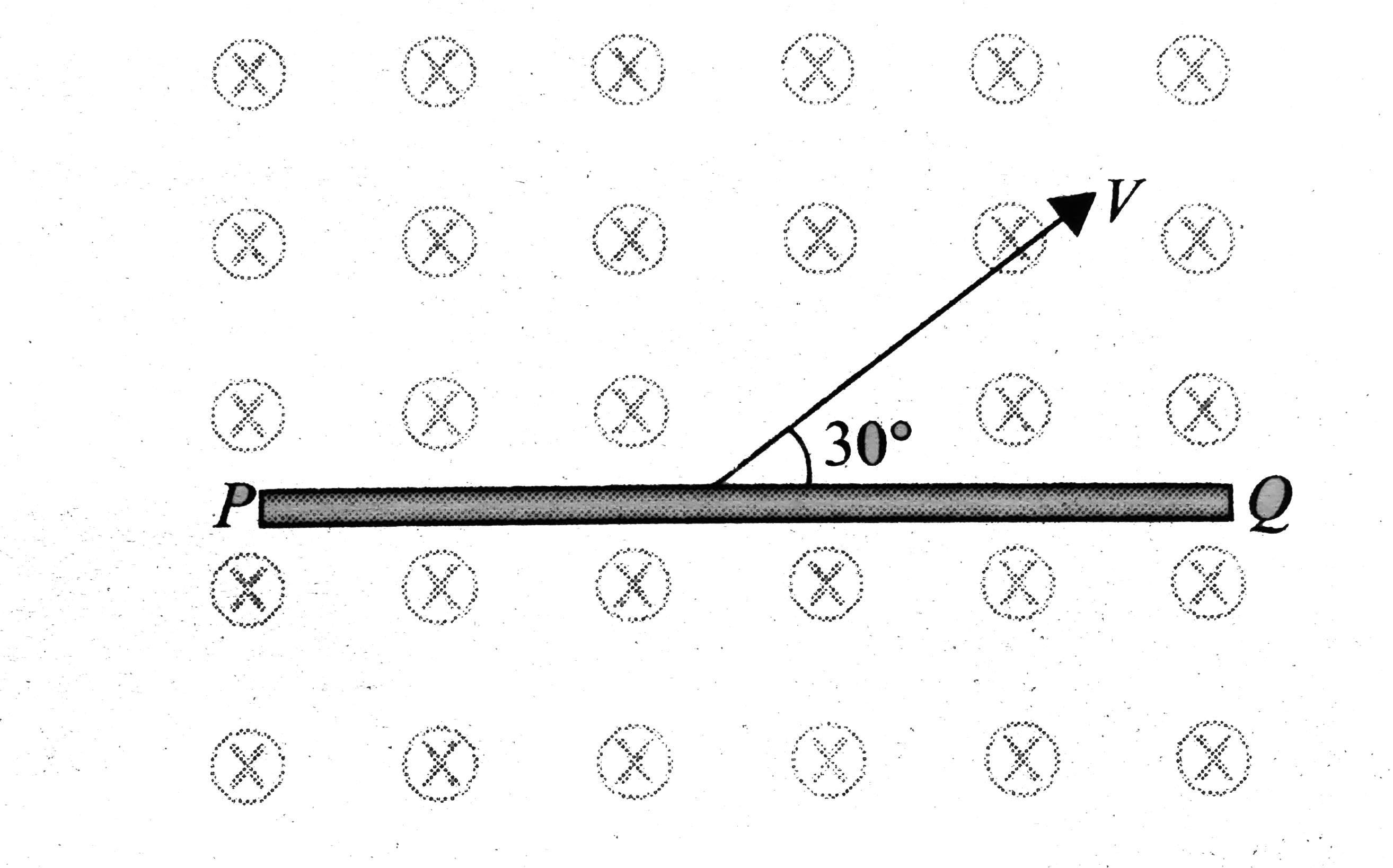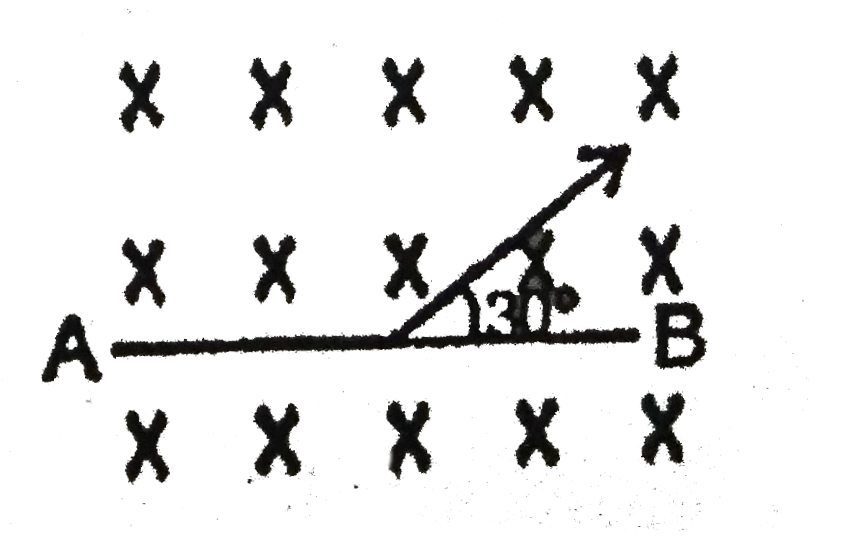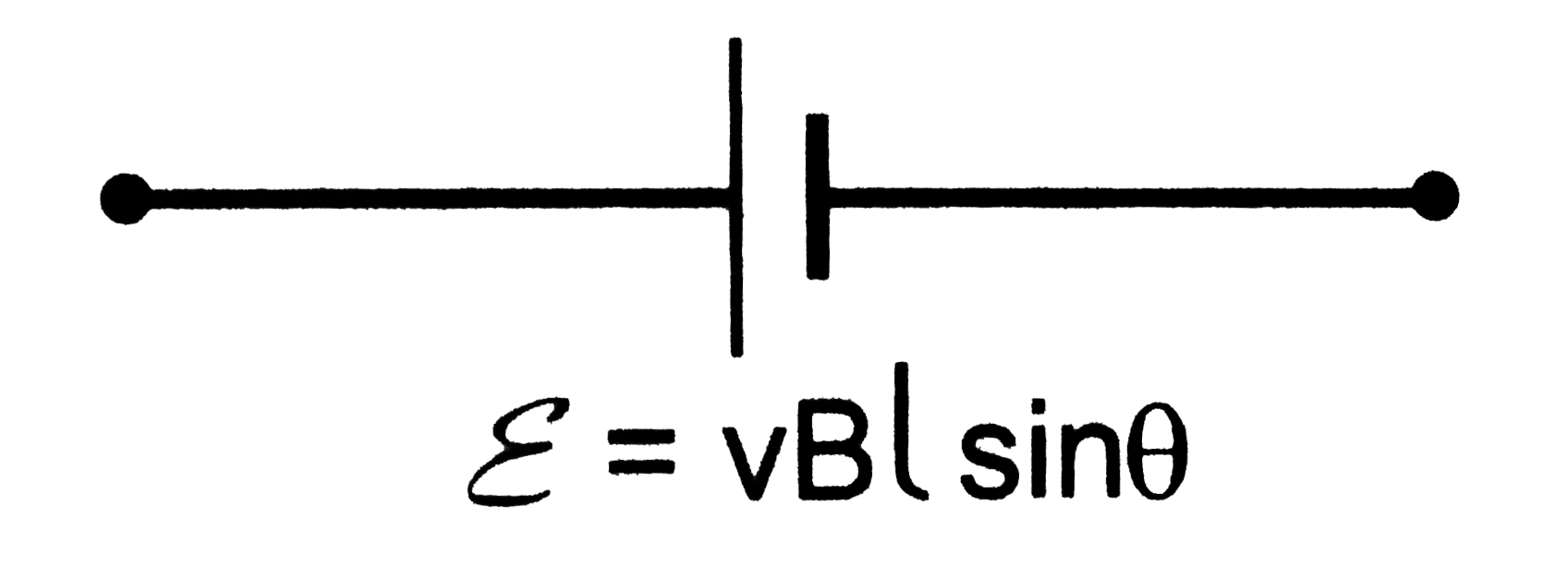A 20 cm long conducting rod is set into pure translation with a uniform velocity of 10cm s ^(-1) perpendicular to its length. A uniform magnetic field of magnitude 0.10 T exists in a direction perpendicular to the plane of motion. Find emf developed in the rod.
To find the electromotive force (emf) developed in the conducting rod, we can follow these steps:
1. Identify the Given Values:
- Length of the rod (L) = 20 cm = 0.2 m (convert centimeters to meters)
- Velocity of the rod (V) = 10 cm/s = 0.1 m/s (convert centimeters to meters)
- Magnetic field strength (B) = 0.10 T
2. Understand the Configuration:
- The rod is moving with a uniform velocity perpendicular to its length.
- The magnetic field is also perpendicular to the plane of motion of the rod.
3. Use the Formula for EMF:
- The formula for the emf (ε) induced in a rod moving in a magnetic field is given by:
EMF=V×B×L
- Here, V is the velocity of the rod, B is the magnetic field strength, and L is the length of the rod.
4. Substitute the Values into the Formula:
- Substitute the known values into the formula:
EMF=(0.1m/s)×(0.1T)×(0.2m)
5. Calculate the EMF:
- Performing the multiplication:
EMF=0.1×0.1×0.2=0.002V
- Therefore, the emf developed in the rod is:
EMF=2×10−3V or 2mV
Final Answer:
The emf developed in the rod is 2 mV.
- Length of the rod (L) = 20 cm = 0.2 m (convert centimeters to meters)
- Velocity of the rod (V) = 10 cm/s = 0.1 m/s (convert centimeters to meters)
- Magnetic field strength (B) = 0.10 T
- The rod is moving with a uniform velocity perpendicular to its length.
- The magnetic field is also perpendicular to the plane of motion of the rod.
- The formula for the emf (ε) induced in a rod moving in a magnetic field is given by:
EMF=V×B×L
- Here, V is the velocity of the rod, B is the magnetic field strength, and L is the length of the rod.
- Substitute the known values into the formula:
EMF=(0.1m/s)×(0.1T)×(0.2m)
- Performing the multiplication:
EMF=0.1×0.1×0.2=0.002V
- Therefore, the emf developed in the rod is:
EMF=2×10−3V or 2mV
The emf developed in the rod is 2 mV.
Topper's Solved these Questions
- BOOK - HC VERMA ENGLISHCHAPTER - ELECTROMAGNETIC INDUCTIONEXERCISE - Questions for short answer9videos
ELECTROMAGNETIC INDUCTION
- BOOK - HC VERMA ENGLISHCHAPTER - ELECTROMAGNETIC INDUCTIONEXERCISE - Objective 210videos
ELECTROMAGNETIC INDUCTION
- BOOK - HC VERMA ENGLISHCHAPTER - ELECTRIC FIELD AND POTENTIALEXERCISE - Objective 27videos
ELECTRIC FIELD AND POTENTIAL
- BOOK - HC VERMA ENGLISHCHAPTER - ELECTROMAGNETIC WAVESEXERCISE - Exercise8videos
ELECTROMAGNETIC WAVES
Similar Questions
A conducting rod PQ of length l=2m is moving at a speed of 2ms−1 making an angle of 30∘ with its length. A uniform magnetic field B=2T exists in a direction perpendicular to the plane of motin. Then
 View Solution
View SolutionA conducting rod PQ of length l=2m is moving at a speed of 2ms−1 making an angle of 30∘ with its length. A uniform magnetic field B=2T exists in a direction perpendicular to the plane of motin. Then
 View Solution
View SolutionA conducting rod AB of length l=1m is moving at a velocity vA=4m/s making an angle 30∘ with its length. A uniform magnetic field B=2T exists in a direction perpendicular to the plane of motion. Then
 View Solution
View SolutionA proton is projected with a velocity of 3X106ms−1 perpendicular to a uniform magnetic field of 0.6 T. find the acceleration of the proton.
View SolutionA conducting rod of unit length moves with a velocity of 5m/s in a direction perpendicular to its length and perpendicular to a uniform magnetic field of magnitude 0.4T. Find the emf induced between the ends of the stick.
View SolutionA metal rod of length 2 m is rotating with an angualr velocity of 100rads−1 in plane perpendicular to a uniform magnetic field of 0.3 T. The potential difference between the ends of the rod is
View SolutionA metallic metre sitck moves with a velocity of 2 ms ^(-1) in a direction perpendicular to its length and perpendicular to a uniform magnetic field of magnitude 0.2 T. Find the emf indcued between the ends of the stick.
View SolutionA rod of length l is translating at a velocity v making an angle θ with its length. A uniform magnetic field B exists in a direction perpendicular to the plane of motion. Calculate the emf induced In the rod, Draw a figure representing the induced emf by on equivalent battery.

 View Solution
View SolutionA semicircular wire of radius 5.0 cm carries a current of 5.0 A. A magnetic field B of magnitude 0.50 T exists along the perpendicular to the plane of the wire. Find the magnitude of the magnetic force acting on the wire.
View SolutionA metal rod of length 15×10−2m rotates about an axis passing through one end with a uniform angular velocity of 60 rad s−1. A uniform magnetic field of 0.1 Tesla exisits in the direction of the axis of rotationn. Calculate the EMF induced between the ends of the rod.
View Solution

